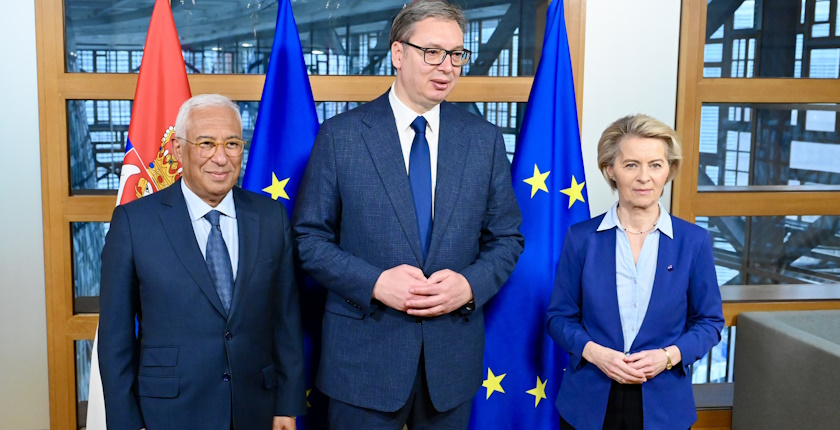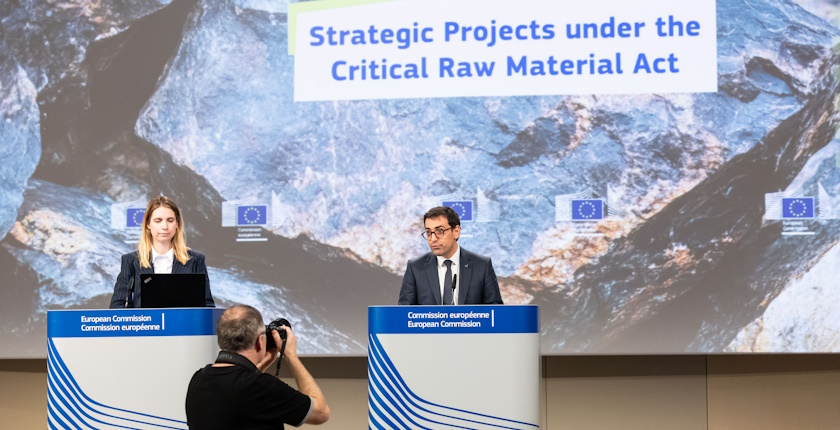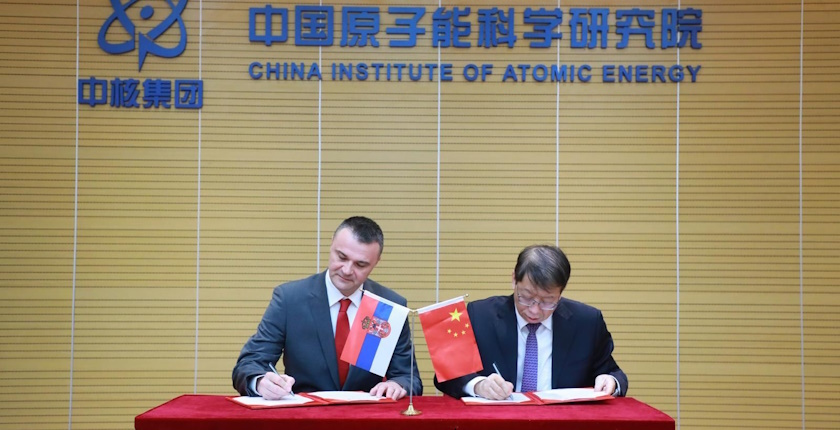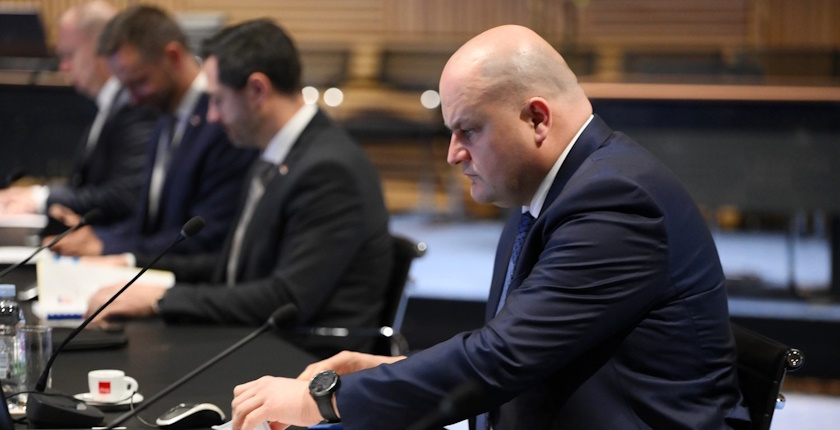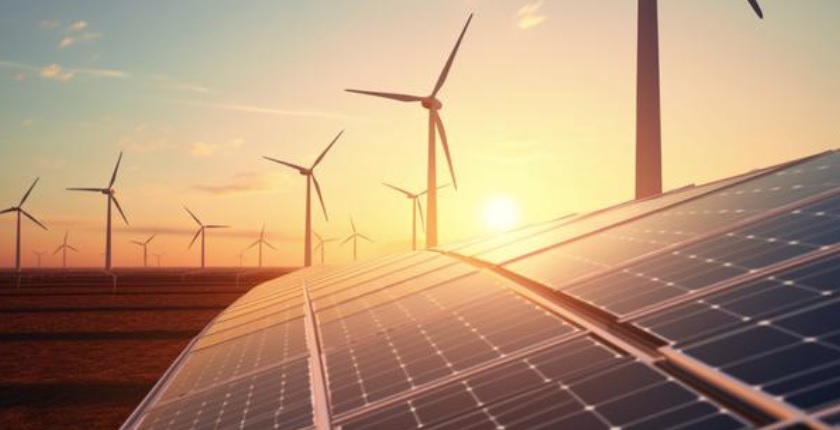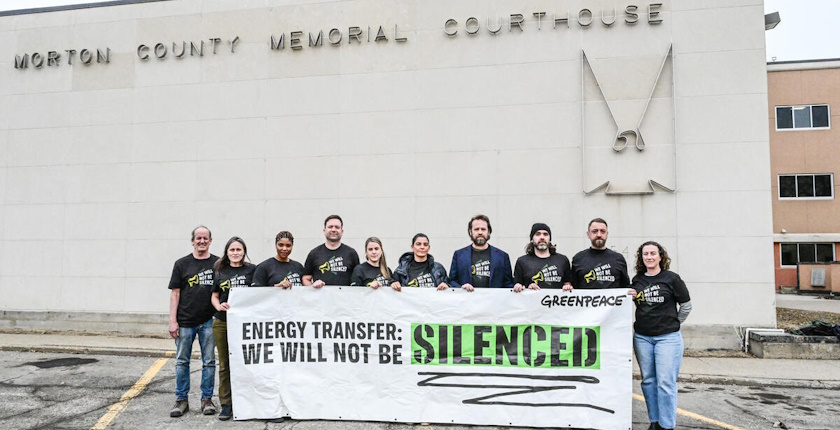
US court rules Greenpeace must pay over USD 660 million to oil pipeline operator
A North Dakota state court in Morton county found Greenpeace liable for more than USD 660 million in damages to Energy Transfer, which controls the Dakota Access Pipeline (DAPL). The environmentalist network, now facing bankruptcy, said it would appeal and that the ruling is part of a renewed push by corporations to weaponize courts to silence dissent.
Free speech and the right to protest are on the line in the United States, according to Greenpeace. A court in Morton county, North Dakota, reached a verdict in Energy Transfer’s lawsuit against the organization’s entities in the US – Greenpeace Inc. and Greenpeace Fund – and Greenpeace International.
It found them liable for more than USD 660 million for defamation, trespassing and other accounts, including even civil conspiracy. The company controls and operates the Dakota Access Pipeline (DAPL), which was put into operation in 2017.
Greenpeace said it would appeal. Energy Transfer brought a “meritless SLAPP.” it added. The acronym stands for “strategic lawsuit against public participation.”
The ruling is part of a renewed push by corporations to weaponize courts to silence dissent, according to the global environmentalist network.
Reckless behavior putting fossil fuel profits over public health, livable planet
The underground pipeline, also called Bakken, runs to Illinois. The suit concerned Greenpeace’s role in protests held in 2016 and 2017.
“We are witnessing a disastrous return to the reckless behaviour that fuelled the climate crisis, deepened environmental racism and put fossil fuel profits over public health and a liveable planet. The previous Trump administration spent four years dismantling protections for clean air, water and Indigenous sovereignty, and now along with its allies wants to finish the job by silencing protest. We will not back down. We will not be silenced,” said Greenpeace International’s Executive Director Mads Christensen.
Christensen: The previous Trump administration spent four years dismantling protections for clean air, water and Indigenous sovereignty, and now along with its allies wants to finish the job by silencing protest
The case should alarm everyone, no matter their political inclinations, according to the interim head of the two US branches Sushma Raman.
“We should all be concerned about the future of the First Amendment, and lawsuits like this aimed at destroying our rights to peaceful protest and free speech. These rights are critical for any work toward ensuring justice – and that’s why we will continue fighting back together, in solidarity,” she stressed.
Countersuit filed in Netherlands
Energy Transfer’s lawsuits are clear-cut examples of SLAPPs — attempting to bury nonprofits and activists in legal fees, push them towards bankruptcy and ultimately silence dissent, the group warned.
The company first turned to a federal court, which dismissed the case.
In February 2024, Greenpeace International initiated the first test of the European Union’s Anti-SLAPP Directive by filing a lawsuit in Dutch court against the same company.
IEN: Energy Transfer couldn’t defeat Indigenous movement, so it went after Greenpeace instead
In the US trial, the organization said it only helped the protest through training for nonviolent direct action. It argued that the events were led by local leaders of Indigenous peoples.
Following the ruling, the Indigenous Environmental Network (IEN) attributed the opposition to the pipeline project to environmental concerns issues and Indigenous rights violations. The verdict sets a troubling precedent for grassroots and Indigenous resistance movements, it added.
IEN’s Program Director Kandi White claims the courtroom was not a place for truth
“This trial was nothing short of a farce – an unfair process with a biased jury and a judge who was out of his league, the 14th one assigned after the rest had to recuse themselves. Almost every time Greenpeace raised an objection, it was overruled, while Energy Transfer’s witnesses were allowed to ramble far beyond the scope of the case. It was clear from the start that this courtroom was not a place for truth. The truth is that Indigenous peoples organized a movement that sparked nations to rise up and defend Mother Earth. And because ET couldn’t defeat us, they went after Greenpeace instead – an organization that proved in court that their involvement had nothing to do with the power of that movement,” IEN’s Program Director Kandi White said.
Energy Transfer intentionally desecrated sacred sites and its pipeline has already leaked at least five times, she added.

